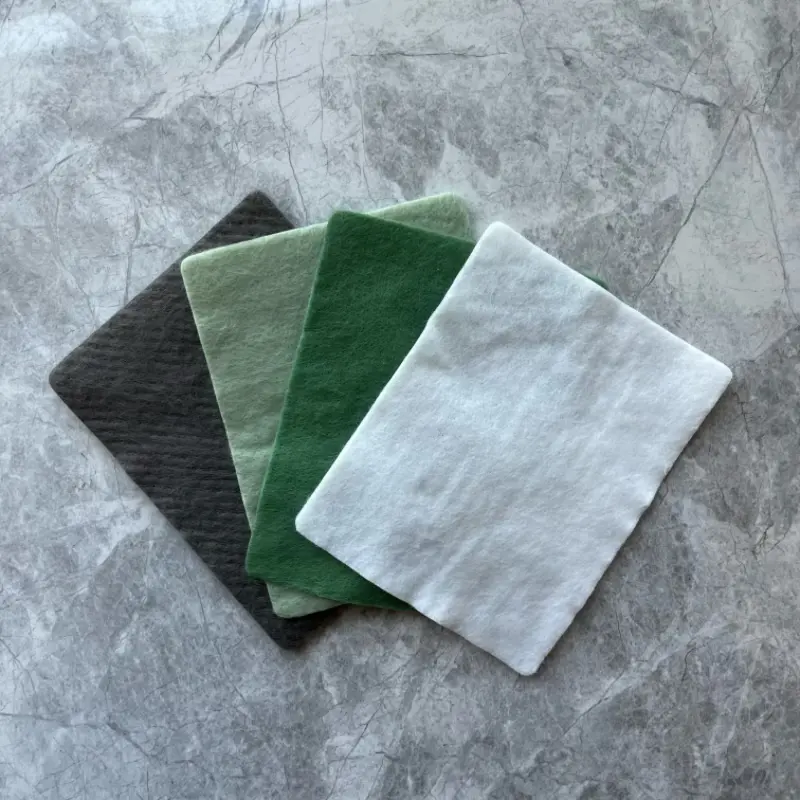What is geotextiles

Geotextiles are synthetic or natural permeable fabrics that are used in various civil engineering applications for their unique functions. These fabrics are engineered to have specific characteristics such as strength, durability, permeability, and filtration capability. Geotextiles are commonly made from materials like polypropylene, polyester, or polyethylene and are available in woven, non-woven, or knitted forms.
Main Functions of Geotextiles:
1, Reinforcement: Geotextiles can be used to reinforce soil structures, retaining walls, and embankments by distributing loads and reducing soil movement. They enhance the stability and load-bearing capacity of the soil, thus preventing erosion and structural failures.
2, Filtration: Geotextiles act as filters to prevent the migration of fine particles while allowing water to pass through. They are used in drainage systems, retaining walls, and erosion control applications to maintain soil integrity and prevent clogging of drainage channels.
3, Separation: Geotextiles provide a barrier between different soil layers or between soil and aggregate materials. This separation prevents intermixing, preserves the integrity of individual layers, and reduces the risk of differential settlement.
4, Drainage: Geotextiles with drainage properties facilitate the efficient removal of water from soil structures and pavement systems. They prevent water accumulation, reduce hydrostatic pressure, and minimize the risk of saturation-related damage such as frost heave and erosion.
5, Protection: Geotextiles can be used to protect geomembranes, liners, and other vulnerable surfaces from damage caused by abrasion, puncture, or UV degradation. They serve as a protective barrier against environmental factors and mechanical stresses.
Overall, geotextiles play multifaceted roles in road construction, contributing to improved pavement performance, longevity, and sustainability while minimizing maintenance requirements and life cycle costs. These mian functions make them indispensable elements in modern road engineering practices.
Application Areas of Geotextiles:
731683.webp)
1, Road Construction: Geotextiles are widely used in road construction to stabilize the soil, reinforce pavement structures, improve drainage, and prevent erosion. They enhance the performance and longevity of roads by mitigating the effects of traffic loads, moisture, and environmental factors.
2, Erosion Control: Geotextiles are used in erosion control applications such as slope stabilization, riverbank protection, and shoreline revetment. They help to prevent soil erosion, retain vegetation, and maintain the stability of natural and engineered slopes.
3, Landfill Engineering: Geotextiles play a vital role in landfill engineering by providing liner systems, leachate collection systems, and gas venting systems. They help to contain waste materials, control pollution, and protect the surrounding environment from contamination.
4, Civil Engineering: Geotextiles are used in various civil engineering projects including retaining walls, dams, tunnels, and underground structures. They provide structural support, drainage, and protection against soil erosion and groundwater infiltration.
5, Geotechnical Engineering: Geotextiles are used in geotechnical applications such as reinforcement of soft soils, soil stabilization, and ground improvement. They help to enhance the strength and stability of soil structures, reduce settlement, and improve overall performance.
Functions of geotextile in road construction

1, Soil Stabilization:
Geotextiles are often used to stabilize the soil beneath roads, especially in areas with poor soil conditions. By distributing loads more evenly and reducing soil erosion, geotextiles help to enhance the stability of the roadbed. This function is particularly crucial in preventing the formation of potholes, rutting, and other surface deformations caused by unstable soil.
2, Reinforcement:
One of the primary functions of geotextiles in road construction is reinforcement. Placed between layers of soil or aggregate, geotextiles act as a tensile reinforcement element, increasing the bearing capacity of the pavement structure. This reinforcement reduces the potential for pavement cracking, rutting, and structural failures, thereby extending the lifespan of the road.
3, Drainage:
Effective drainage is essential for the long-term performance of roads, especially in regions prone to heavy rainfall or groundwater issues. Geotextiles with drainage properties facilitate the efficient removal of water from the pavement layers, preventing water accumulation and associated problems such as subgrade saturation, frost heave, and erosion. By maintaining optimal moisture conditions, geotextiles contribute to the durability and resilience of the road.
4, Separation:
Geotextiles serve as a barrier between different layers of soil or aggregate materials in road construction. By preventing the mixing of these layers, geotextiles ensure the integrity and stability of each component. Separation also minimizes the potential for intermixing of fine and coarse particles, which can lead to differential settlement and structural deterioration over time.
5, Filtration:
In areas where roads are built on soft or unstable ground, geotextiles function as a filtration layer to prevent the migration of fine particles into the drainage system or base layers. By retaining soil particles while allowing water to pass through freely, geotextiles maintain the integrity of the pavement structure and prevent clogging of drainage channels. This filtration capability is crucial for preserving the hydraulic performance and functionality of the road.
Geotextiles play a multifaceted role in road construction, offering solutions to various challenges faced by infrastructure engineers. From soil stabilization and reinforcement to drainage, separation, and filtration, geotextiles enhance the performance, durability, and sustainability of roads. As the demand for robust and resilient road networks continues to grow, the importance of geotextiles in modern construction practices cannot be overstated. By incorporating geotextile technology into road projects, engineers can build roads that withstand the test of time and contribute to safer, smoother, and more reliable transportation systems.
If you are interested in our products,feel free to contact Echo:
Phone/Whatsapp: 0086-18853127527
email:export@hygeosynthetics.com

897.webp)
942.webp)
237.webp)